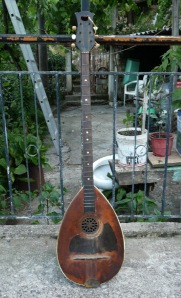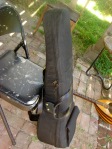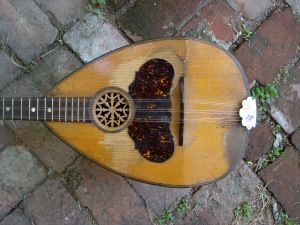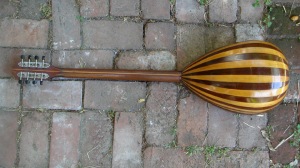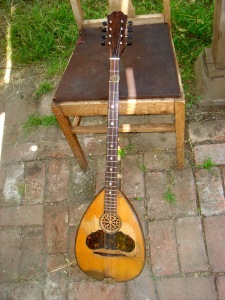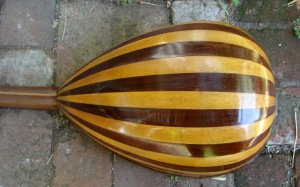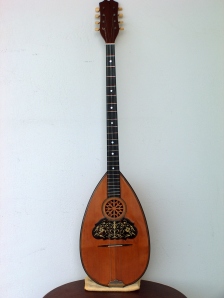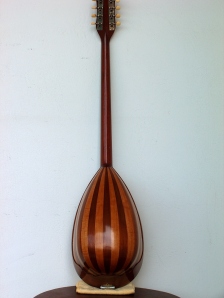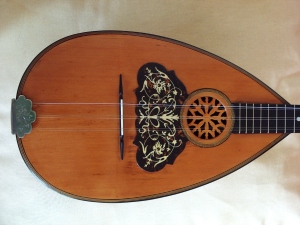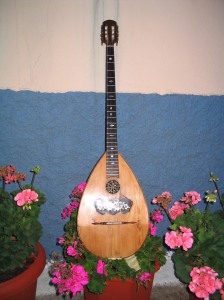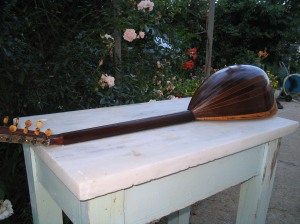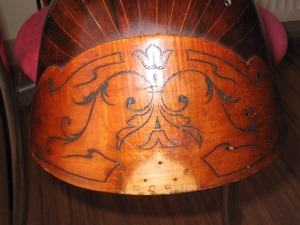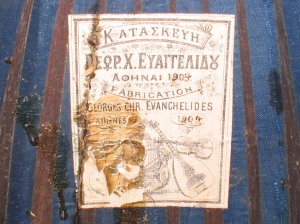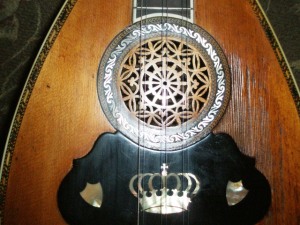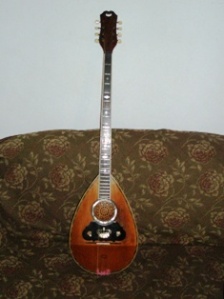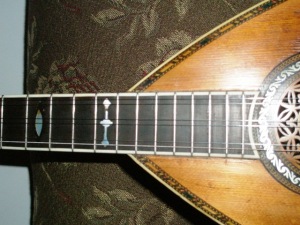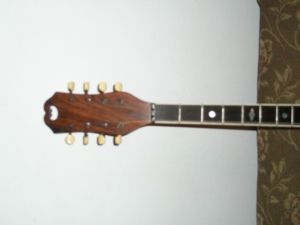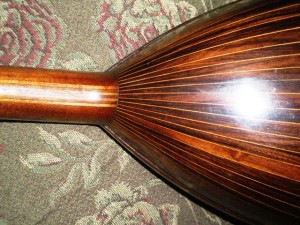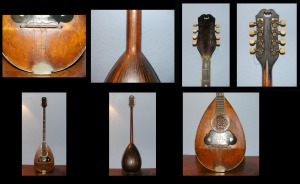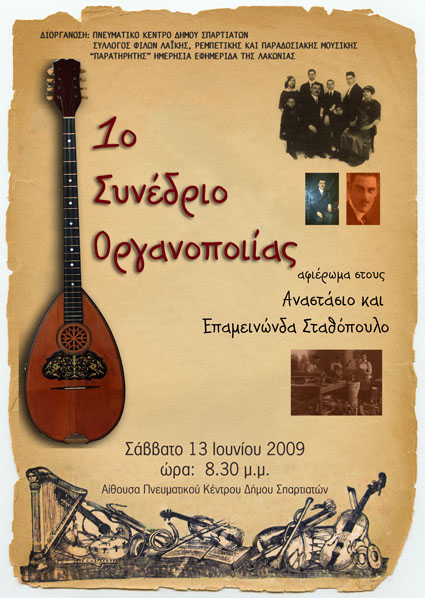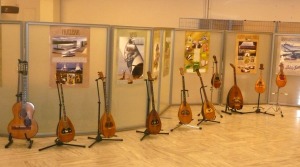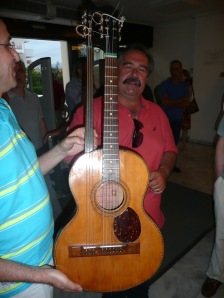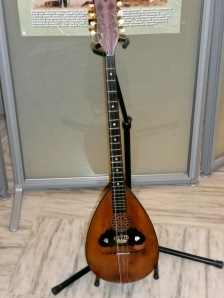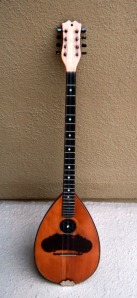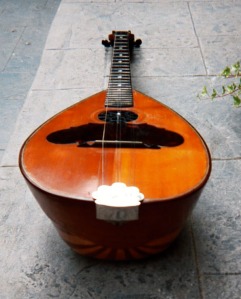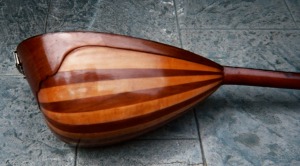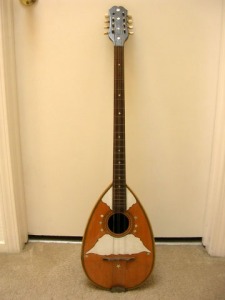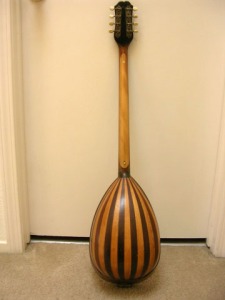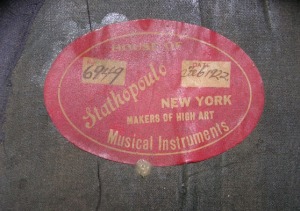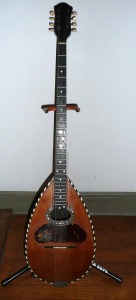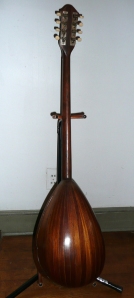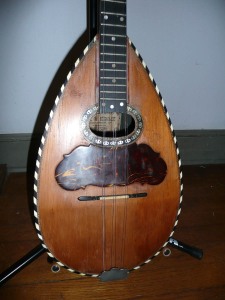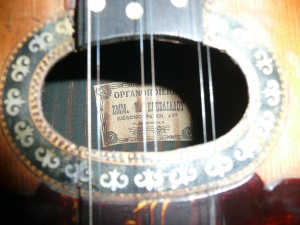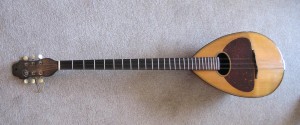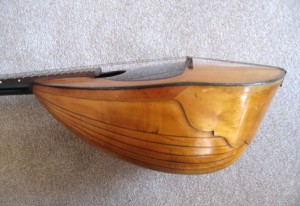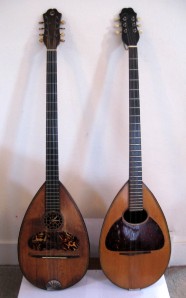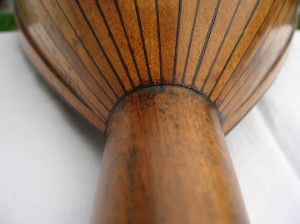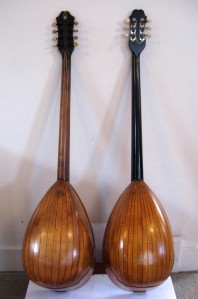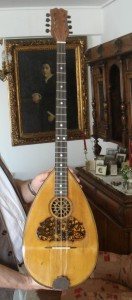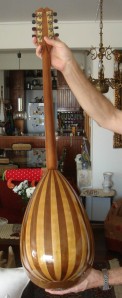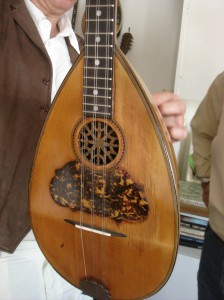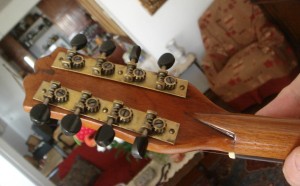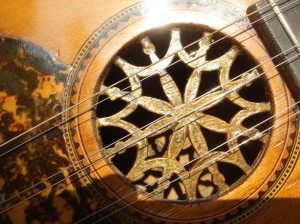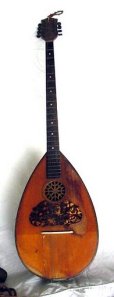1873 – 1915 Anastasios Stathopoulo
Anastasios Stathopoulo was the son of a Greek timber merchant, born in Sparta Greece in 1863. At the age of 10 he became interested in building musical instruments. Under the influence of his father he had acquired a natural sense and feel for wood and wood working. According to the family literature created in the 1930’s, Anastasios built lutes, violins and traditional Greek Lioutos supporting the local music of the time. He was good at it and his interest grew as he aged and chose not to follow in his father’s business.
There were limited opportunities for the growth of his father’s business in Sparta and apparently better options in Smyrna, Turkey. The Strathopoulo family moved to Smyrna in 1877 when Anastasios was 14. They adapted well to their new surroundings and the family appears to have been successful. By 1890, at age 17, Anastasios struck out on his own and established a musical instrument manufacturing business building mandolins, lutes, violins and traditional Lioutos. Anastasios was also busy building a family: he married Marianthe in 1892 and had his first son Epimanondas (Epi) in 1893. Sons: Alex and Orpheus (Orphie) and daughter: Alkminie (Minnie) soon followed.
The political situation in Turkey in the 1890’s was devolving as ethnic tensions increased. Greek immigrants were under steady persecution and this pressure on the Stathopoulo family plus the promise of greater opportunity in the United States led to their decision to try a new life once more in America. They arrived in 1903 – just about the same time that the Gibson Company was being formed.
1907 – America
The family took some time to reestablish itself but by 1907 they had taken up residence at 121 West 28th Street in Manhattan. They lived upstairs and operated a shop at street level. They remained there for about 5 years until 1912. During this time Epi and Orphie worked with their father in the shop learning the family business.
The timing was good. America had entered a mandolin craze. Mandolin Orchestras were formed from coast to coast. New York was at the heart of setting musical trends with Tin Pan Alley churning out musical scores and distribution networks that could reach Chicago and the Pacific shores within days. There was no TV or radio yet and every house had a music room. Every child had some degree of musical training usually including sight reading as a primary form of social interaction and entertainment. This meant there was heavy demand for good quality and sweet sounding mandolins, violins and banjos. The Stathopoulo family arrived at the right time. Strathopoulo family instruments labels stated: “A. Stathopoulo, Manufacturer-Repairer of all kinds of Musical Instruments”. The instruments caught on and business flourished. The House of Stathopoulo expanded into a new shop / warehouse on 247 West 42nd Street. The family enjoyed the fruits of a successful business and the children received a good education were raised in the trappings of privilege.
Unfortunately, in July 1915 Anastasios died at the age of 52 from cancer.
Used with permission from www.AcousticMusic.Org
